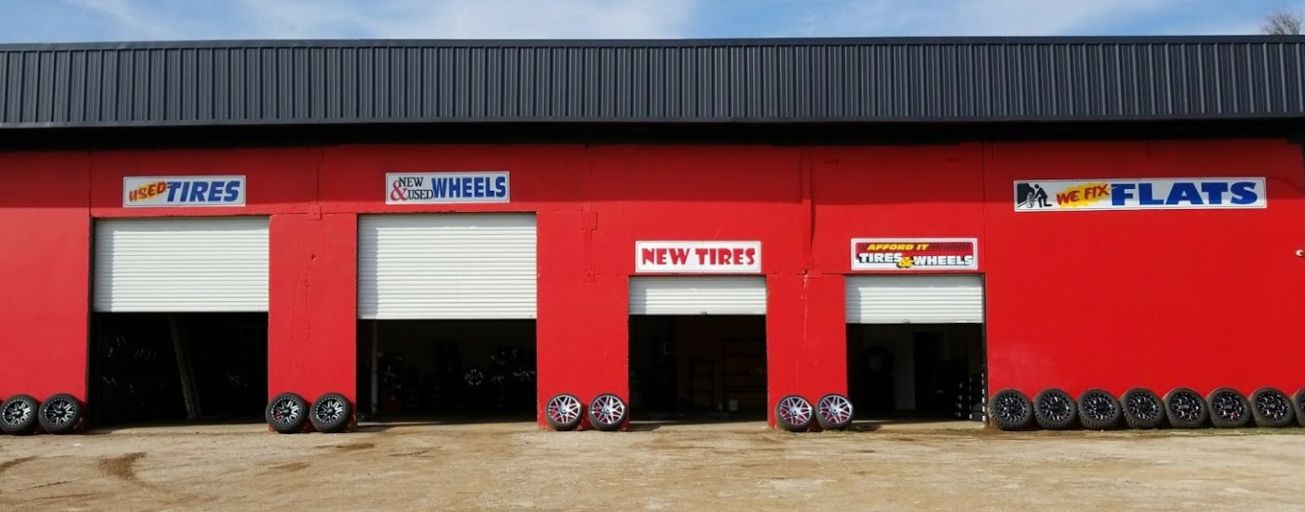The Scientific Research Behind Tire Repair Work and Security
When it concerns the intricate globe of tire upkeep and safety and security, there exists a world of scientific research that commonly remains hidden by the average driver - tire shop near me. The materials that compose a tire, the impact of tire stress on total safety, the implications of walk wear, the complex characteristics of tire traction, and the often-overlooked importance of correct wheel placement all play essential duties in making certain a lorry runs securely and effectively. As we navigate with the complexities of tire repair and security, it comes to be noticeable that a much deeper understanding of these scientific principles is not just beneficial yet essential for each vehicle driver when traveling
Tire Composition and Performance
What materials make up the composition of tires, and how do these components contribute to their functionality on the road? Steel cables are incorporated to improve the tire's strength and aid it maintain its form under various roadway conditions.
The rubber substances use hold and grip, enabling the tire to adhere to the roadway surface area and offer security throughout velocity, stopping, and cornering. Overall, the careful choice and mix of these products guarantee that tires can perform properly and safely on numerous road surface areas and problems.
Influence of Tire Pressure on Safety And Security
On the various other hand, overinflated tires have much less contact with the roadway surface area, minimizing traction and causing irregular wear on the tire treads. Appropriately filled with air tires also play an important role in fuel performance, as underinflated tires can enhance moving resistance, leading to reduced gas mileage. Routinely examining and preserving the correct tire stress not only ensures security however also expands the life-span of the tires, saving on substitute expenses in the lengthy run.
Footstep Put On and Its Implications
Correct tracking of tire walk wear is critical for ensuring optimal efficiency and safety when driving. As tires wear down, the deepness of the walk diminishes, minimizing the tire's ability to preserve grip, specifically in slippery or damp conditions. The tread pattern and deepness play an essential role in funneling water far from the tire to avoid hydroplaning and preserving grip on the road surface area.
Signs of excessive step wear consist of bald areas, unequal wear, and the appearance of wear signs. Bald areas indicate localized wear, which can lead to instability and increased risk of blowouts. Uneven wear might suggest problems with tire suspension, alignment, or inflation elements. Use indications are built into the tire tread and become visible when the step depth reaches a particular low factor, indicating the need for great site immediate substitute.

Recognizing Tire Traction Characteristics
Keeping an eye on tire walk wear not just guarantees optimal efficiency and safety and security yet likewise directly click here to find out more influences the grip dynamics of the tires on different road surface areas. Tire grip is a vital element of lorry handling and safety, as it figures out the grasp in between the tires and the roadway. Grip characteristics vary depending upon road conditions such as completely dry sidewalk, wet roadways, snow, or ice.

Understanding tire grip dynamics is crucial for chauffeurs to adapt their driving habits according to the roadway conditions. tire tracks morris il. Consistently inspecting tire tread depth and problem can considerably improve traction efficiency, ensuring more secure driving experiences throughout different surfaces
Value of Correct Wheel Alignment
Making certain right wheel positioning plays an important function in maximizing vehicle efficiency and extending tire longevity. Proper wheel positioning involves changing the angles of the wheels to manufacturer specs, making sure that they are perpendicular to the ground and parallel to each other. When alignment is off, it can result in uneven tire wear, decreased gas efficiency, and jeopardized handling.
Among the essential benefits of preserving appropriate wheel alignment is improved handling and stability. Misaligned wheels can create the vehicle to draw to one side, impacting guiding control and overall driving experience. Additionally, right placement promotes even tire wear, protecting against premature tire substitute and saving money on upkeep prices in the lengthy run.

Conclusion
To conclude, the scientific research behind more tips here tire repair and safety and security is vital for keeping vehicle performance and guaranteeing chauffeur safety and security. By comprehending tire make-up, stress, step wear, traction characteristics, and wheel alignment, drivers can avoid crashes and lengthen the life-span of their tires. Proper upkeep and normal assessments are important for optimal tire efficiency and general car safety and security. By complying with these standards, drivers can drive with confidence understanding that their tires are in excellent condition.
The products that make up a tire, the effect of tire stress on general safety and security, the implications of walk wear, the elaborate dynamics of tire grip, and the often-overlooked relevance of correct wheel positioning all play essential functions in ensuring a car runs safely and effectively. On the other hand, overinflated tires have much less contact with the road surface area, lowering grip and creating irregular wear on the tire treads. On a regular basis checking and preserving the correct tire pressure not just guarantees safety however likewise extends the life-span of the tires, saving on substitute prices in the long run.
Checking tire step wear not just ensures ideal efficiency and security however likewise straight influences the grip dynamics of the tires on different roadway surfaces. Tire grip is an important aspect of car handling and security, as it figures out the grip between the tires and the road.